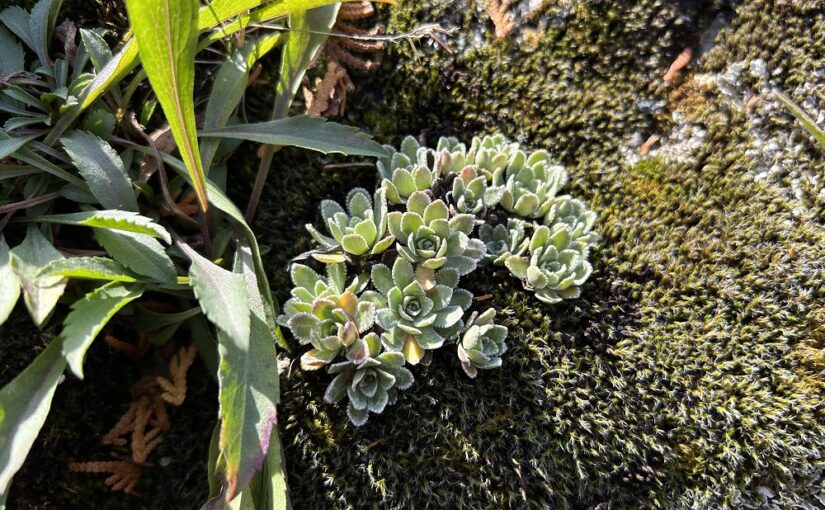Today’s post comes from Cara Freitag, a park naturalist at Sleeping Giant Provincial Park.
One of the most interesting stories that a small, shrubby, low-growing plant can tell is that of Sleeping Giant’s arctic disjunct species.
They survived a journey of over 850 km: that’s almost infinity for small plants like the Encrusted Saxifrage.
Travelling from the geological area known today as Polar Bear Provincial Park, these plants have found microclimates they can also call home here at Sleeping Giant.
Sleeping Giant’s microclimates
The microclimates found in Sleeping Giant Provincial Park provide a home for arctic plants searching for a new place to belong.
They grow on the cliffs of the Giant as well as the exposed, rocky shoreline of the west side of the park.
At Tee Harbour, Common Butterwort and Bird’s-Eye Primrose grow along the edges of the ephemeral pools trapped in the grooves left by glaciers, which are exposed to the sharp winds blowing in from Lake Superior.
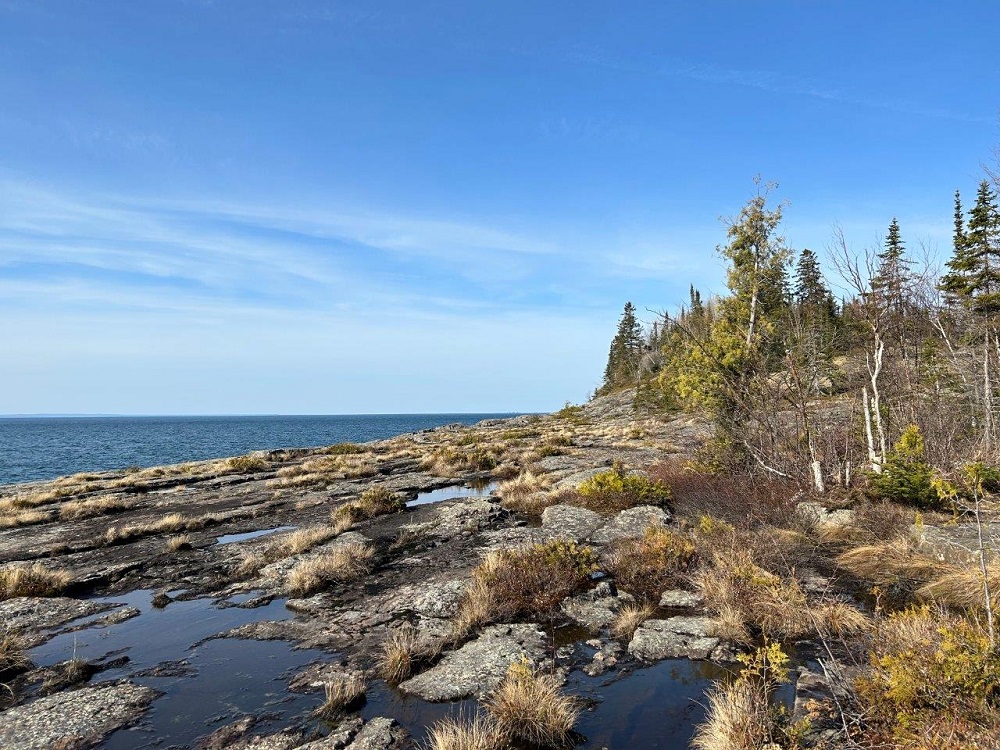
At Middlebrun Bay, the deep cold ache of the area’s inland bog water hints at the presence of Black Crowberry and Lingonberry. These small, low-growing plants can be difficult to find, but they love the bog near the shore of Lake Superior.
What makes an arctic plant?
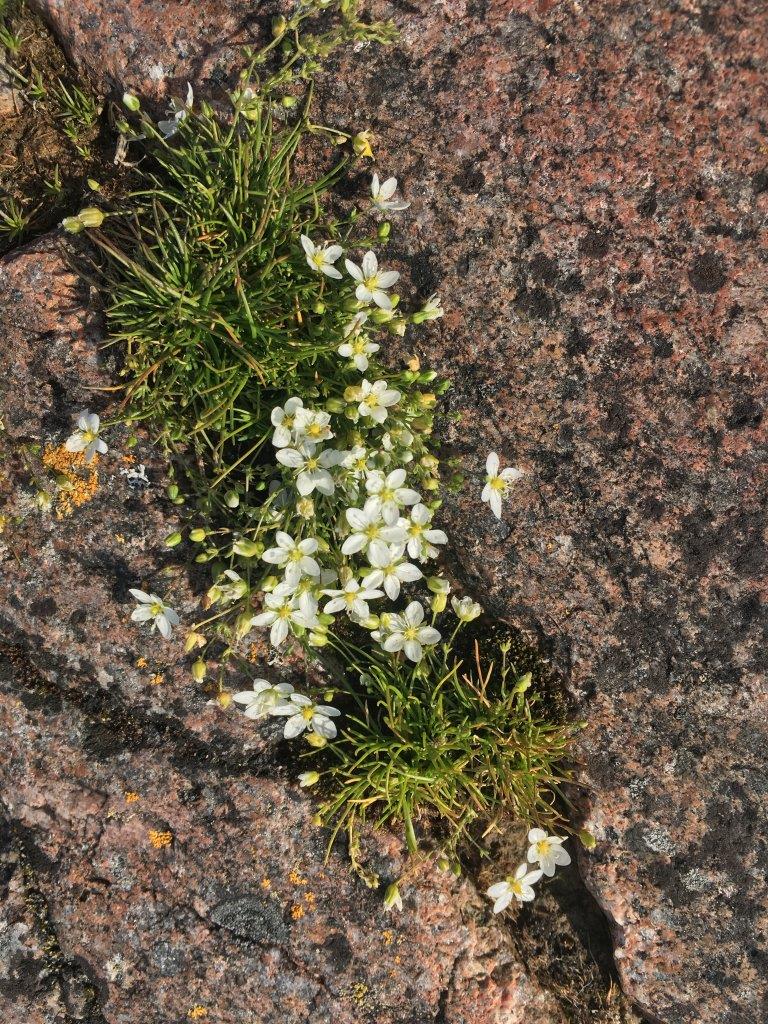
Well, they’re usually pretty small and grow low to the ground to deal with the strong winds of the arctic.
Some of them have thick or waxy leaves to protect against water loss, and many have small leaves that are only present at the base of their stem.
Most arctic plants grow in tight clusters to protect each other in the wind and snow of the arctic.
How did they get here?
The Ice Age was a powerful force of nature that left lasting marks on the landscape of Ontario.
This landscape now provides a beautiful refuge for life.
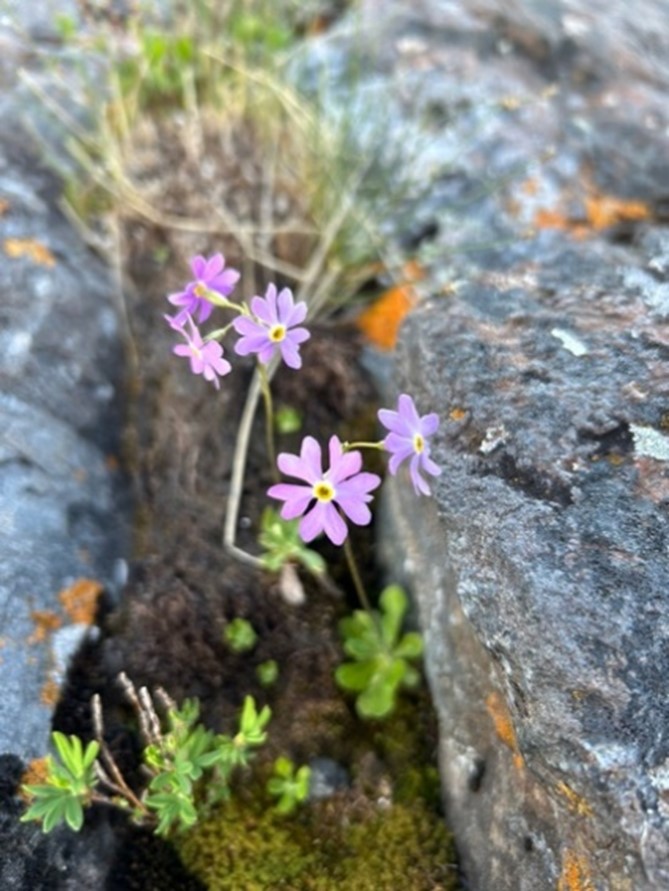
Evidence of past glaciers, like the scarring of rocks, can be seen all over the province: in long parallel gouges in the bedrock, in lake basins, and in the cuestas (a hill with a gentle slope on one side and a steep slope on the other) around Sleeping Giant Provincial Park.
During the last Ice Age, the Laurentide Ice Sheet covered most of Canada in thick glaciers that reached multiple kilometres high in places.
As the ice sheet expanded, it brought sediment and plant seeds along with it as it scraped up the ground during their long journey.
When the glaciers started to melt and retreat around 10,000 years ago, they dropped the plant seeds they had collected. The landscape was tundra-like, and these little seeds were used to that.
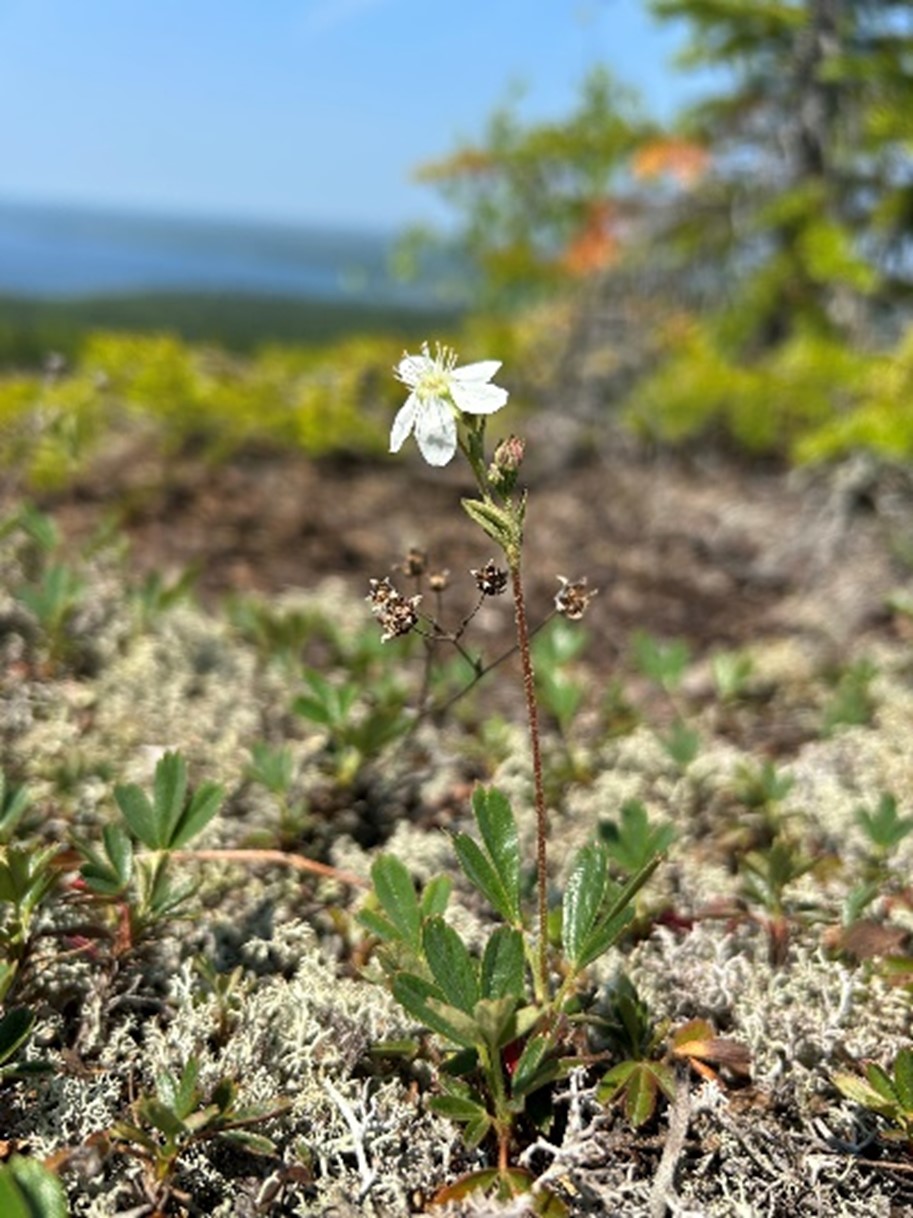
These relocated plants had found a place where they could belong.
The park area offered a good environment for these arctic plant species, but the climate was still changing.
The glaciers continued to retreat, and as they did, they tore away the softer sedimentary rock layer, exposing the Sleeping Giant rock formation that we know and love today.
These glaciers also carved out the basins of what would become the Great Lakes, filling them with melting glacier water.
Eventually the climate became what it is now, and the only arctic plants to survive were those growing near the cold waters of Lake Superior.
This is why they are called arctic disjuncts: the other members of their community grow in the arctic, but these here at the park are an isolated (disjunct) population that grows away from their usual ranges.
How were they able to stay?
Lake Superior keeps the surrounding area colder than inland areas, providing habitat for species that otherwise would not survive here.
Abandoned by the same ice age that formed the Giant, arctic disjunct plants are protected by the microclimates of the shorelines and cliffs of Sleeping Giant Provincial Park.
So what is a microclimate?
First, we have to talk about what a climate is.
It’s the long-term average temperature and precipitation of a very large region (think boreal forest, tundra, or desert).
On the other hand, a microclimate is a small area that is different from the surrounding larger climate of an area.
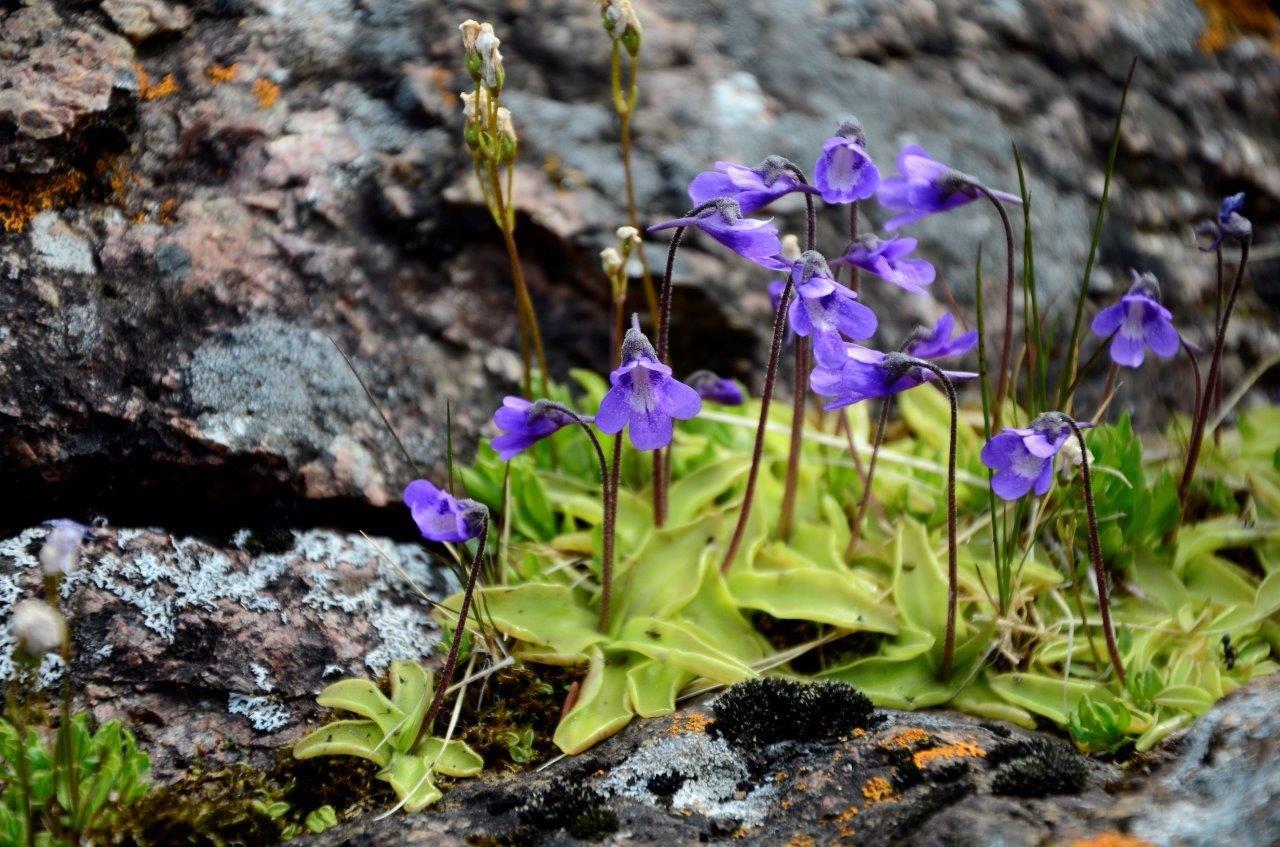
Have you ever felt like you had walked from one climate into a pocket of another? Some examples of where that might happen are caves (gets cooler), the sunny side of hills (gets warmer), and forests (gets cooler).
Arctic disjuncts can survive here due to the cooling effect of weather patterns created by Lake Superior making little microclimates that are similar to their original arctic home.
The happiest and safest place
Where’s your favourite spot to be?
Maybe it’s at your house or camp/cottage. Maybe it’s even at your favourite provincial park! Just like arctic disjunct plants need specific microclimates, we all have our own personal microclimates that make us feel the safest and happiest.
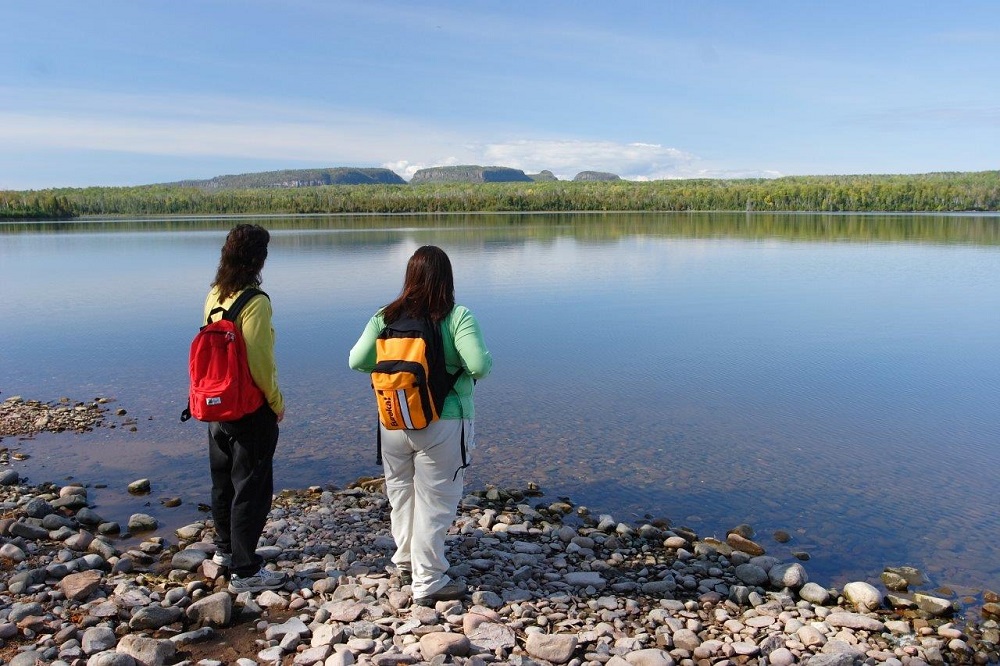
A microclimate isn’t just a specific location, though; it’s also everything that is found there.
Parks like Sleeping Giant protect the microclimates of arctic disjunct plants. This ensures these special places will be home for displaced species for as long as they’re here.
Visit Sleeping Giant Provincial Park to see these tiny, tenacious plants for yourself!
